Hydraulic pitch and electric pitch are two common pitch technologies in wind power generation, each showing unique advantages and limitations in the field of wind power generation. The following is a detailed comparison of the advantages and disadvantages of these two technologies, in order to more fully understand their characteristics.
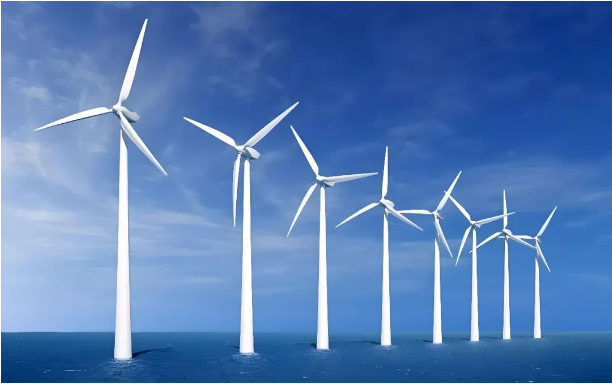
01, wind power generation hydraulic pitch and electric pitch comparison
1. Working principle
Wind power hydraulic pitch: hydraulic pump as the source of power, hydraulic oil as the transmission medium, solenoid valve as the control unit, through the piston rod extends, retracts the action to realize the blade angle change.
Wind power electric pitch: the servo motor as a power source, through the reducer, the output shaft gear and the root of the paddle slewing support gear of the inner gear of the common meshing rotation, drive the paddle rotation, so as to realize the control of the pitch adjustment.
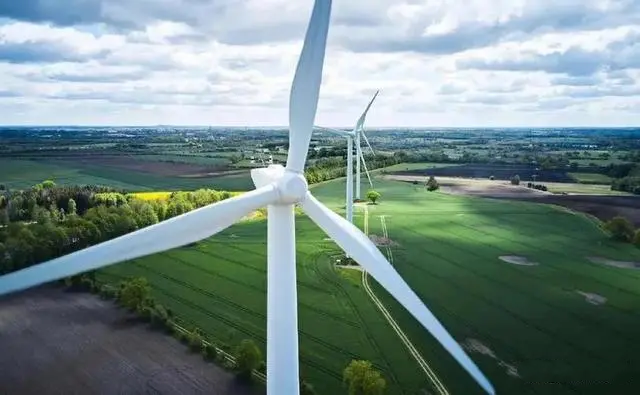
2. wind power generation hydraulic pitch and electric pitch respective advantages
Advantages of hydraulic pitch system for wind power generation:
1. Hydraulic drive pitch system has fast response, high stiffness, high torque, and smooth operation;
2. The existence of hydraulic damping can absorb the impact torque above the blade rotor shaft, and play a very good shock absorption buffer effect on the blade and the wind turbine itself;
3. the hydraulic pitch system uses simpler bearings and a stronger structure;
4. high pressure and no gear, no backlash frequency response fast accumulator to ensure failure safety;
5. hubs and pitch bearings can be smaller, eliminating the need to lubricate gears and reducing lubrication points for centralized lubrication;
6. at low temperatures, the energy stored in the accumulator is smaller, the energy stored in the accumulator is easily monitored through pressure. Use of the accumulator as emergency pitch change power, long service life and quick response in case of emergency.
Advantages of electric pitch change for wind power generation:
1. low energy consumption;
2. quiet operation;
3. no risk of hydraulic oil leakage, no environmental pollution, less energy loss;
4. simple transmission structure, high synchronization and accuracy of pitch;
5. better stability under low temperature.
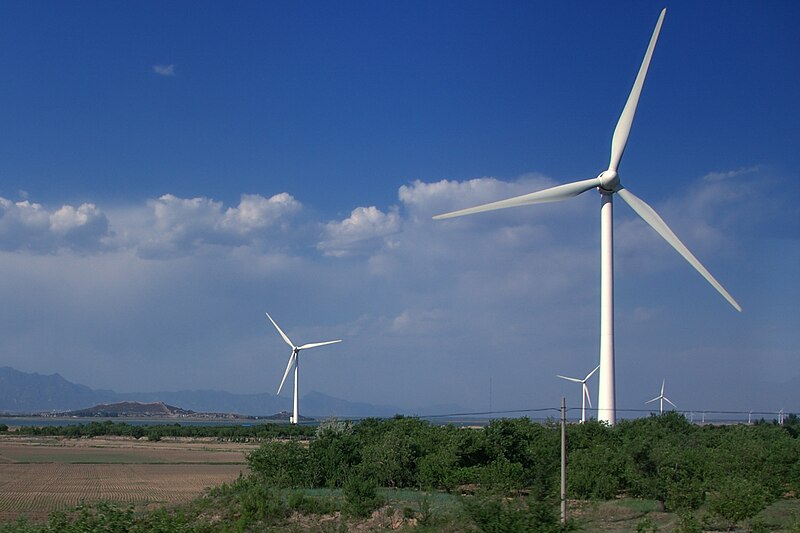
3. The shortcomings of hydraulic and electric pitch for wind power generation
The shortcomings of hydraulic pitch for wind power generation:
1. The industrial chain is not perfect, the price of hydraulic pitch system is high, and the system is complicated. 2;
2. There are many pipeline joints, and there are problems of poor sealing and aging seals, and there may be hydraulic oil leakage;
3. when the hydraulic system has operational faults, it is relatively difficult to repair and maintain, and requires specialized personnel to operate;
4. hydraulic pump continuous operation of energy consumption, the system heat is relatively higher, the need for supporting coolers for system cooling;
5. Fluid rotating components are required, with high pressure loss and high component requirements;
6. Hydraulic oil and filter need to be tested and replaced regularly.
The shortcomings of wind power electric pitch:
1. Battery or super capacitor, relatively short service life;
2. The wear of the teeth of the pitch system with toothed bearings is a common problem, and the use of the method of reserving holes for the reducer and replacing the positional gears can cope with this wear to a certain extent. However, when all position gears have failed again, re-lifting is required to replace the entire bearing or associated components;
3. as the capacity of the unit increases, the motor inertia also increases, deteriorating the dynamic response characteristics, and frequent adjustment of the paddles tends to damage the motor due to overheating, and components are prone to burnout;
4. when many frequent disconnections will deplete the backup battery, there may be a problem of not being able to smooth the paddle;
5. Large megawatt wind turbines have higher wind energy capture and longer, heavier paddles, which leads to frequent braking of the pitch motor to return energy, so that the pitch braking resistor needs to withstand greater current and energy consumption during operation. Long-term energy consumption will make the braking resistor material easier to aging damage, affecting the wind turbine operating efficiency and power generation.
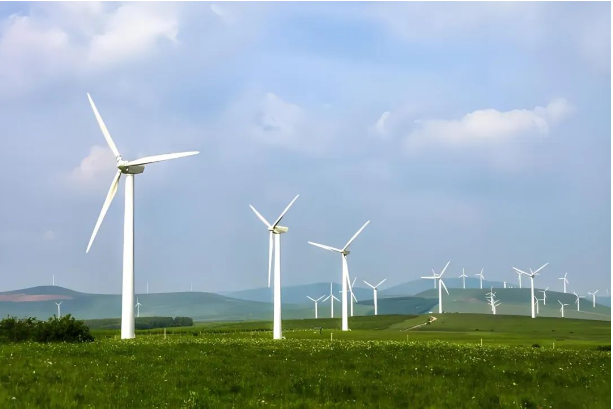
02, wind power generation new hydraulic pitch system
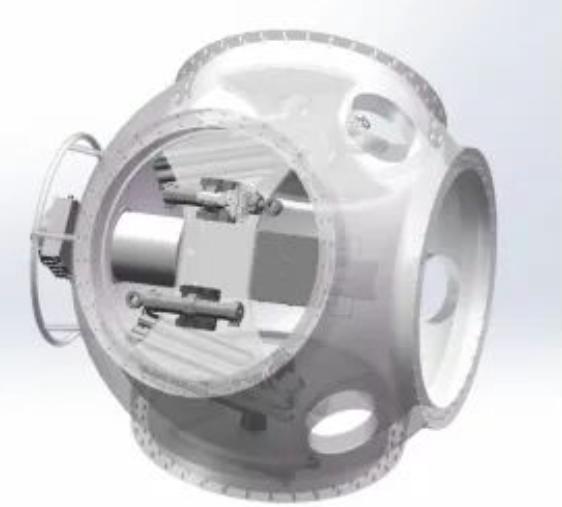
In order to optimize the wind energy conversion efficiency and ease of maintenance, the new scheme eliminates the traditional hydraulic slip ring design. In this innovative layout, the hydraulic pump station, pitch manifold, accumulator, cylinder and control system are all skillfully integrated and placed in the internal space of the hub. This not only maximizes the use of the limited space inside the hub, but also ensures coordinated operation and efficient interaction between the components through precise layout and compact structure. Through the motor pump control system, the flow of hydraulic oil can be directly and precisely controlled, achieving energy saving while realizing precise adjustment of the blade angle; higher transfer efficiency and lower energy loss. This layout not only improves the overall performance and reliability of the system, but also makes the subsequent maintenance and overhaul work more convenient and efficient.
The system adopts modular and universal design to realize the universal design of materials among different models. By adopting the standard module assembly method, it not only makes the production process more flexible and convenient, but also reduces the duplication of work, significantly improves the production efficiency, greatly simplifies the supply chain management, facilitates the maintenance and upgrading in the later stage, as well as significantly shortens the product design cycle, and all of these advantages together effectively reduce the All these advantages work together to effectively reduce the manufacturing and operation and maintenance costs of the enterprise and improve the overall competitiveness.
This program has the following advantages:
1. Shorten the pipeline
The hydraulic pump control unit integrates the pump and control system together, thus reducing the piping connections from the pump to the control valve and other actuators. This not only simplifies the system structure, but also helps to reduce fluid resistance and pressure loss in the piping.
2. Reduction of leakage points
With fewer piping connections, the risk of leaks is reduced. Leaks not only lead to environmental pollution, but may also have a negative impact on the normal operation of the equipment. Therefore, the reduction of leakage points is essential to improve the reliability and stability of the system.
3.Cost Reduction
The integrated and modular design of the hydraulic pump control unit helps to reduce the overall cost of the system. This is achieved by reducing the number of pipes, fittings and other accessories, as well as simplifying the installation and commissioning process. In addition, due to reduced maintenance costs, the overall operating costs will be reduced accordingly.
4. High energy conversion efficiency
The integrated design not only improves the compactness of the system, but also contributes to its performance and efficiency. Maximize the use of hydraulic pump efficiency, improve the energy conversion efficiency, reduce the cost of driving.
5. Easy to install
Due to the modular and standardized design, the installation process is relatively simple and quick. In addition, due to the reduction of piping connections and other complex components, possible errors and problems during installation will be reduced accordingly.
The hydraulic pitch system adopts a gearless transmission, effectively avoiding the wear and tear problems of traditional gears, and significantly improving the stability and life of the equipment, as well as reducing maintenance costs and downtime. The hydraulic pitch system is known for its high torque and high load capacity, ensuring stable and precise control of the blades under all conditions, avoiding cylinder desynchronization, and is particularly suitable for independent pitch changes, optimizing wind turbine performance and wind energy utilization, demonstrating excellent flexibility and performance.
Hydraulic pitch systems are continuing to evolve in the direction of compactness, cost-effectiveness and ease of maintenance. With technological innovation, more innovative products will be launched for hydraulic pitch systems to meet the diversified needs of the market. In the future, improving the industrial chain and strengthening the intelligent control system will be the two keys to its development. Through the synergistic cooperation between the upstream and downstream of the industry chain, it will enhance the production efficiency, reduce the cost, and promote the healthy development of the whole industry. At the same time, the optimization of the intelligent control system will further enhance the performance and reliability of the hydraulic pitch system, so that it can better adapt to the development trend of wind power generation. In conclusion, hydraulic pitch system will play an increasingly important role in the wind power generation field by virtue of its unique advantages and broad prospects.
Boland Renewable Energy Co.,LTD As an integrated new energy power company, providing youwith high quality integrated wind energy , solar energy and energy storage system solutions.Boland is now a subsidiary of CRRC, and is responsible for the overseas expansion of CRRC's wind power & solar power business. We have a relatively complete internal supply chain, service network and excellent product quality and technology.
Boland Provide power plant EPC,Power plant investment and acquisition.
Please feel free contact us if you need any technical support.Cheers for our cooperation!
My email:marketing@boland-hydroturbine.com
WA:+8613923745989


